Buckle up and ride a rocket through our interactive view of the Solar System to explore our cosmic neighbourhood
Get Started for FREE
Sign up with Facebook Sign up with X
I don't have a Facebook or a X account

| Tags |
|---|
 Your new post is loading... Your new post is loading...
 Your new post is loading... Your new post is loading...
"The misconceptions about visual thinking are alarming. On one hand, this critical skill seems integral for contemporary learning, since almost every modern input is visual in nature. Yet this key proficiency seems almost entirely absent from state standards and daily classroom lessons."
Beth Dichter's insight:
What is visual thinking? How can we teach visual thinking to our learners? ASIDE has an excellent post that provides five presentations that explore visual thinking from different perspectives. All of them share information on the "the power of visuals to craft a layered approach toward teaching with creative design." The five presentations (all from slideshare) are: * Visual Thinking Presentation * Visual Thinking and the Writing Process * Visual Thinking for Brainstorming, Planning, Learning, Collaborating, Harvesting * An Introduction to Visual Thinking * Visual Thinking Help us to... Each of these presentations provides a different viewpoint. Many of our learners are visual learners today. This post will provide you with great resources to help them hone the skill of visual thinking (and will also help you).
From
vimeo
Climate change is complex. An increase in CO2 causes the earth to warm up, but is that a bad thing? And what does it mean to the Netherlands? Studio Lakmoes designed…
Beth Dichter's insight:
Climate change may still be a controversial subject in some areas. This short video provides a clear explanation about climate change. With the celebration of Earth Day later this month you may find this useful to share in your classroom.
As we progress rapidly into the middle of the second decade of the 21st century, questions continue to be raised about how education addresses the ever ..
Beth Dichter's insight:
This post includes the inforgraphic (shown above) as well as additional information on pros and cons of flipping a class. The sections in the post are: * Flipped Learning for a Flipped World * Flipping the Numbers * Flipping to Engage Active Learning * Flipping from Passive to Active * In a Nutshell You may find new ideas in this post that will allow your learners to be be more engaged 
Elizabeth Roman's curator insight,
April 29, 2015 8:44 PM
Infografía sobre el aprendizaje invertido: ¿Qué apoyo se necesita? ¿Qué se hace dentro y qué se hace fuera del aula?
A spoken word poem by Ryan Lotocki. Filmed by: Nick Stroczkowski and Kurt Schlewitt If you would like to get in contact with Nick shoot him an email at nick....
Beth Dichter's insight:
This spoken word poem is by a high school student, sharing their view of school today and why change/reform is needed. Listen and learn from his words. 
SMARTERTEACHER's curator insight,
April 6, 2015 11:43 AM
Are we listening to what our students needs are?
"Over the last few years I've seen more schools opening up access to YouTube, at least to teachers, than I had in the past. YouTube for Schools has partially contributed to that trend. Tools like ViewPure and Watchkin have made using YouTube videos in schools a little less scary too. All that said, there are still lots of schools that block access to YouTube. That's why a few years ago I started to maintain a list of alternatives to YouTube."
Beth Dichter's insight:
Richard Byrne has updated his post about alternative websites that provide video. Back in 2010 he posted 47 websites that provide videos with descriptions. This link will take you to that list with some new sites that have come online, as well as sites that have been crossed out. He provides brief descriptions for the majority of websites.
Tennelle Searle's curator insight,
March 31, 2015 8:42 AM
WOW I will be defiantly be looking into the use of some of these. I am always hiding in a corner watching YouTube videos to ensure no nasty surprises before I show it to the children, 
SMARTERTEACHER's curator insight,
April 6, 2015 11:45 AM
With so many schools and districts handcuffing faculty and students, there are ways to get around the censorship.
Search is Google’s main business and they take it seriously. Features are constantly released that enable it to better display the information that is most relevant to you so you (…) Read more
Beth Dichter's insight:
Ask the Gooru has recently posted 12 google search tips, some of which may be new to you (or perhaps all will be new). Will you be taking a flight soon? Type in My Flight and you should see your itinerary. Are you having trouble recalling words to a song or poem? Type in what you recall, and use astericks for the missing words. Check out the post for 11 more tips...yes, they give you one extra as a bonus! 
K.I.R.M. God is Business " From Day One"'s curator insight,
March 28, 2015 1:56 AM
GOOD FOR VISUAL LEARNERS! YES!
You may be surprised by how much your emotional intelligence affects your career. If you’re getting your online MBA degree to develop your managerial and
Beth Dichter's insight:
Emotional IQ is a skill that is often mentioned as a key skill for the 21st century. This infographic shares information on emotional intelligence and is divided into a number of sections. * What is emotional intelligence (EI)? * Does higher EI mean improved job performance? * Why do employers value EI over IQ? * How EI affects your image? * Take stock of your EI. * Improve your emotional intelligence to improve your life Although this infographic is geared to students in college there is information that you may find to share with students across many grade levels. Emotional intelligence plays a role in our classrooms and providing learners with more skills in this area may improve their ability to more actively participate and be engaged.
"This is a follow up to a post I wrote, How Do We Learn? How Should We Learn? The he purpose of these posts is to encourage educators to examine practices they take for granted, implement without deep reflection of their efficacy. This post discusses the instructional practice of asking students to memorize information."
Beth Dichter's insight:
Is the memorization of information an effective way for learners to retain information? According to brain research the answer would be no. It is critical that connections be made. This post by Jackie Gerstein discusses the need for: * Context * Increase context and relevancy In the section on increasing context and relevancy you will find a visual of an Authentic Learning Matrix as well as a number of links to additional resources. 
Maruja Romero's curator insight,
March 27, 2015 8:49 AM
Contexto en la enseñanza, es una necesidad pero cada vez vemos muchos vídeos y lecciones que aparecen de la nada y no están contextualizadas ni en un programa, ni motivadas por unos objetivos ni su relación con un currículo.
"We live in a visual world. Smartphones, television, Internet, and social media all push information in real-time, all the time. Visual media bombard us in constant streams. Learners of every age, therefore, need to understand how to analyze pictorial information. This skill of parsing images, interpreting pictures, and decoding diagrams is known as graphicacy."
Beth Dichter's insight:
Learn more about graphicacy in this post by ASIDE. There is a short motion graphic (explainer video) that provides an overview what visual literacy is...a way to encode/decode images and the ability to analyze visual information are two components. Research makes it clear that we have many visual learners in our classrooms (~65%). In addition "the brain processes optic inputs 60,000 times faster than text." This post provides links to a number of articles that ASIDE has published that discuss graphicacy and provide great resources. You will also find information in ASIDE on creating infographics with students as young as Grade 2.
Nancy Jones's curator insight,
March 25, 2015 12:17 PM
The whole field of visual literacy and interpretation has exploded in the last 25 years. It is time to recognize its value and teach our students not only the ability to decipher and interpret them, but to create them as well.
I absolutely love all of the emphasis on mindsets these days. There are growth mindsets (which I discuss in The Educator with a Growth Mindset: A Staff Workshop) and maker mindsets (which I discuss...
Beth Dichter's insight:
We often hear of growth mindset and fixed mindset. Is there also a creative mindset? Jackie Gerstein suggests that there is a creative mindset in this post. Why? If a mindset is defined as "ideas and attitudes with which a person approaches a situation" there is a list of "ideas and attitudes" that may be part of a creative mindset. The visual above provides Gerstein's list of some items she considers important for a creative mindset. The list is also below. * Believes in one's own creativity * Embraces curiosity * Suspends judgement - silences the inner critic * Tolerates ambiguity * Persists even when confronted with skepticism and rejection * Taps into childlike imagination; a child's sense of wonder Each of these is described in more detail and links to additional resources are provided. There is also a short discussion conditions necessary to facilitate creative mindset in a classroom.
Kathy Lynch's curator insight,
March 21, 2015 11:26 AM
Thanks, Beth Dichter. I find the mindsets very understandable and appealing, much like the science habits of mind.

SMARTERTEACHER's curator insight,
April 6, 2015 11:48 AM
We must stop educating students out of their creativity and foster an environment that celebrates the creative genius of the students entrusted to our care.
From the moon to the cosmos, this is the universe we live in.
Beth Dichter's insight:
Outer space fascinates learners...and this post from VOX provides 40 maps that are divided into sections: * The Solar System * Earth * Space History * The Moon * Mars * The Rest of the Solar System * Beyond the Solar System If you teach Earth Science many of these maps may be of interest. One map that many students may find of interest is takes a look at the universe based on the moon being 1 pixel. It is located at this link.
Students who have a growth mindset do better in school. Learn more about a growth mindset, the evidence showing its power, and the practices that promote it.
Beth Dichter's insight:
The data shows that learners whom have growth mindsets do better in school. But how do we know which learners have growth mindsets and which have a fixed mindset. PERTS (the Project for Education Research that Scales from Stanford) has a mindset kit (in beta form) that is available at no cost. In it you will find lessons that you can use with your learners. The website states that the mindset kit is a "free, online resource designed to help educators and parents learn about adaptive academic mindsets, learn practices that promote these mindsets, and download activity ideas." You will also find a survey that you have learners take (and you will receive a report with the final score). Are you interested in teaching your learners about growth mindset? This is a great tool, and they welcome feedback as they will continue to add resources to this site. Take some time to explore this site. 
Mary Cunningham's curator insight,
April 4, 2015 12:43 PM
We could use this and add to it with our SIM work! |
From
teach
"Interested in bringing maker ed into your classroom? Patrick Waters, teacher and Maker Ed professional, shares 9 creative (and easy) starter projects." (Image above from https://farm6.staticflickr.com/5105/5641722557_3935d1f74d_o.jpg)
Beth Dichter's insight:
Check out nine maker projects that you can do in your classroom. The projects are divided into three sections: * Smaller Scale Maker Education Projects which includes - Towers of Power - Catapults * Design Challenges - Bridge to Nowhere - Float the Boat - Egg Drop - Instruments * Play with Light - Electromagnets - Squishy Circuits - MakeyMakey Controller Boards Each of the projects includes a list of materials and tools needed as well as a brief explanation. Look over the ideas and consider having an evening where families could come in and experience hands-on science by completing a project (or two).
February 11, 2015 marks five years in space for NASA's Solar Dynamics Observatory, which provides incredibly detailed images of the whole sun 24 hours a day....
Beth Dichter's insight:
This video may change the way you view the sun. For the last five years NASA's Solar Dynamics Observatory (SDO) has been taking images of the sun and this video provides views that are breath taking. I have shown this video to students from kindergarten through grade 7 and all want to see it again. There are amazing images with music, and very few words. Try to find five minutes in your day to watch this, and chances are you will find yourself forwarding the link to others. Quoting from NASA "Watch the movie to see giant clouds of solar material hurled out into space, the dance of giant loops hovering in the corona, and huge sunspots growing and shrinking on the sun's surface."
"This post is promoted by Noet, makers of Encyclopedia Britannica Noet Edition and the free research app for the classics, who asked us to talk about the credibility of information research in a digital world. We thought, then, that it might make sense to focus on digital tools and resources that highlight the idea of credibility."
Beth Dichter's insight:
Terry Heick makes it clear that this is a sponsored post and recommends 13 lessons and 13 tools that we may want to share with learners (and teachers) to help them gain a better understanding as to why research and credibility are important digital concepts. Below are several of the "lessons" that we need to understand. * Not all sources are created equal. * You can combine digital search with academic content. * Question everything - even if you like the source. * Want credibility? Cite your sources. In addition to the 13 lessons there are also thirteen tools that are suggested, such as: * EasyBib * Summon (an alternative to Google Scholar) * Zotero - a website that is free and allows you to "collect, organize, cite and share your research choices." There is much more information in this post so take the time to click through...and think how nice it would be if our learners understood and embraced the 13 lessons.
"You can’t watch a video like you read a book; the modalities couldn’t be much different."
Beth Dichter's insight:
We know that students are now seeing videos as components of online testing. Most students know strategies to use when reading text, but what works best with videos? This post provides 40 comprehension strategies that you may want to teach in your classroom. The post begins with a short exploration of text and videos and then explores the interaction between video and text. The comprehension strategies are divided into four sections (information below quoted from the text): * Before viewing comprehension strategies that promote understanding of video and streaming content. * During viewing comprehension strategies that promote understanding of video and streaming content. * After viewing comprehension strategies that promote understanding of video and streaming content. Each of these sections has ten questions that provide anchor strategies. For example, the first section (before viewing) includes Anchor Strategies: Viewing Purpose, Preview, Predict, Connect
Gary Harwell's curator insight,
April 5, 2015 8:38 AM
If you are able to use Video in class, these are some things yoiui should think about.
How far would you have to travel to reach the Earth's core? And what would you see along the way? Discover what lies beneath...
Beth Dichter's insight:
Check out this interactive graphic that will allow you to see what happens as one moves from the earth's crust to the center of the earth. Learners will discover how far it is to the center as well as discovering just what is under the crust. As you travel down you will notice that scale changes.You will also see what happens as you drop down in the oceans. Consider using this with an earth science class to learn more about our planet on the inside.
"Julie Grimm, a teacher at Salem Avenue Elementary School in Hagerstown, Maryland, was concerned that many of her 2nd grade students failed to become engaged in their research projects. She found herself spending lots of time trying to provide the right research framework... Then Julie made one simple shift that disrupted her typical classroom practice and led to a more dynamic learning environment."
Beth Dichter's insight:
Learn about the power of question formulation in this post. The information comes from the Right Question Institute, and provides a great overview of how to teach your students to ask good questions. The post is split into the following sections: * The Power of Question Formulation * Question Formulation in Practice (which includes) - Step 1: The teacher designs a question focus - Step 2: Students produce questions - Step 3: Students work with open-ended and close-ended questions - Step 4: Students prioritize questions - Step 5: Teacher and students discuss next steps for using the questions - Step 6: Students reflect * A Catalyst for Deeper Learning * A Small but Significant Shift There are also some examples of the question formulation technique from classroom teachers.
"But before you blindly jump on the infographics bandwagon and splatter your course with these visuals, make sure that you stock up on information about how they work and when to use them. Badly-designed infographics or placing them out of context can increase the cognitive load of a course. So here's the lowdown on infographics."
Beth Dichter's insight:
Infographics seem to be everywhere today, and educators are taking note and using them with students. This post provides information on the use of infographics for elearning, but the same concepts apply to face2face learning. The post is divided three sections that include: * When to use infographics * When NOT to use infographics * 6 tips to create effective and stunning infographics Additional resources are included in the post. If you are designing or revising a course and have not made use of infographics that post may provide you with ideas on how to best incorporate this form of visual learning into your curriculum. And if you currently use infographics check it out to learn more.
jane fullerton's curator insight,
March 29, 2015 10:26 AM
Awesome resource for a quick how to tutorial on infographics!
"Students often ask how to determine which websites and articles are good sources to cite. My answer is always, “Well, what do you think?” Students need to be able to think on their own. So, if your student offers some questionable sources, ask, “Why did you choose that one?” Try to get the student to think about the who, what, why, and when of the article and website. Let the student use critical thinking to come to a valid conclusion. They might just have a good reason for using the source."
Beth Dichter's insight:
Mia MacMeekin recently posted a new infographic that helps students learn how to determine if online resources are reliable. It is split into four sections, and each section has seven questions. The four sections are: * Who wrote it? * What is it for? * Why was it written? * When was it written? With the additional questions students should be able to determine if the site is relevant to their research, and use critical thinking skills as they come to their decision. This is an area where many students struggle, and this visual may help them become more comfortable in learning how to evaluate information. 
Mel Riddile's curator insight,
March 26, 2015 6:12 AM
Beth Dichter's insight: Mia MacMeekin recently posted a new infographic that helps students learn how to determine if online resources are reliable. It is split into four sections, and each section has seven questions. The four sections are: * Who wrote it? * What is it for? * Why was it written? * When was it written? With the additional questions students should be able to determine if the site is relevant to their research, and use critical thinking skills as they come to their decision. This is an area where many students struggle, and this visual may help them become more comfortable in learning how to evaluate information. 
Anita Vance's curator insight,
March 28, 2015 11:11 AM
Helpful to encourage thinking and self-evaluating...
From
vimeo
Available in 4K, The Fire Within is a visceral, artistic study on the Big Island of Hawaii's hyperactive Kilauea volcano. I was born and raised on the island and…
Beth Dichter's insight:
This video provides an amazing look at the Kilauea volcano located in Hawaii. You will "witness molten rock slowly burning down a dense wet rainforest" and "peer into a six-hundred-foot-wide lava lake at Kilauea's summit crater." The power of a volcano comes alive in this video and students may begin to ask questions based on the impact of the images.
Here's the problem with what I'm about to tell you: these tactics may may be news to you, but in psychology circles most of them have been around for dec
Beth Dichter's insight:
Do our learners know how to study? Perhaps a better question is do we understand the research that shows successful ways to study have been known for decades, but our current learning environment is not necessarily conducive to these learning habits. T This post shares ten strategies for studying, as well as providing links to additional resources. It ends with a short discussion on why we may not be seeing these strategies used. * Study to learn, not to "know." Knowing means we may know an answer, but not truly understand what is being discussed. * Imagine you'll be teaching someone else. Research is showing that the expectation that you will need to teach material to others tends to use more effective learning strategies. * Separate process from progress. Does learning end? Do we make progress but continue in the process? * Space out your study sessions over time. Brain research shows that cramming is not effective. There are many insights in this post that you may want to share with your students and colleagues.
Nancy Jones's curator insight,
March 23, 2015 1:36 PM
Some good reminders and a great question. Who teaches the kids how to make the optimum use of this information?
Nancy Jones's curator insight,
March 23, 2015 1:37 PM
Who is teaching this to our students? I think that is the question. some great tips and throughtful explanations as well.
Use these ten reflective questions at the end of class to help learners deepen their understandings of themselves and their work.
Beth Dichter's insight:
As teachers many of us spend time reflecting on our lessons. Do we provide our learners with time to reflect? This post shares the author's personal observations on the value of reflection as well as ten questions that you may want to use with your learners. Three of the questions are below. * Where did you encounter struggle today, and what did you do to deal with it? * What made you curious today? * What about your thinking, learning, or work today brought you the most satisfaction? Why? There is also a link to two other resources that are focused on reflective questions for the writing process. One of the resources is focused the writing process with primary and intermediate writers and the second is on the writing process but towards more advanced writers. These two resources are located here. 
SMARTERTEACHER's curator insight,
March 19, 2015 1:25 PM
Excellent questions to bring closure to a class Instead of the bell. 
Mary Cunningham's curator insight,
April 4, 2015 12:35 PM
These would be great questions for the end of any and all PD sessions we do! Maybe they should take the place of the surveys we usually do?
"Information literacy equips students with the critical skills necessary to become independent lifelong learners. PBS LearningMedia provides resources that address information literacy skills underlying the basic tenets of Common Core State Standards."
Beth Dichter's insight:
PBS LearningMedia is continuing to add resources and lessons to their website. This post shares five resources that help teach information literacy, with a focus on gathering, evaluating and analyzing. The five resources are listed below with brief explanations. For more information click through to the post. Gathering Information * Exploring Social Media with #Hashtags - for students Grade 6 - 13+ Evaluating Information * ARTHUR'S Guide to Media Literacy - for students PreK - 4 * Evaluating the Validity of Information - Did the Chinese Discover America in 1421? Grades 6 - 8 Analyzing Information * Analyzing Information - Can Pigs be Pets - Grades 3 - 5 * Media Arts: How to be a Critical Viewer - Grades 6 - 13+ You will need to create a free account if you do not already have one to access all their materials. |




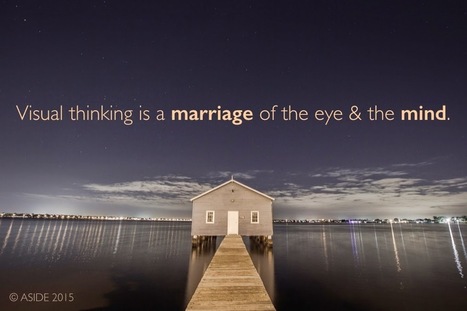






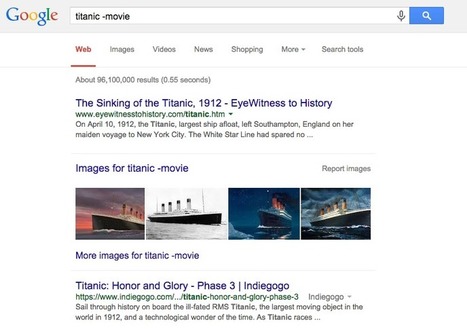



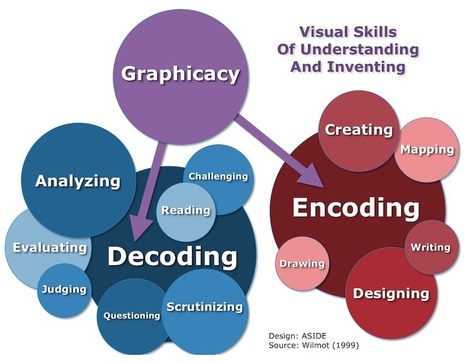

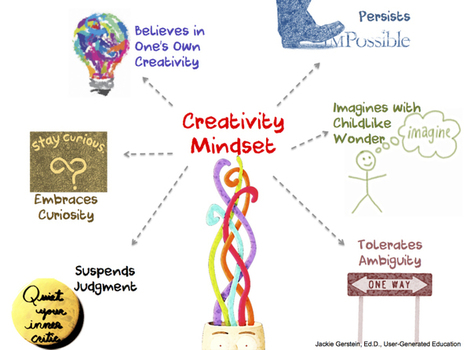
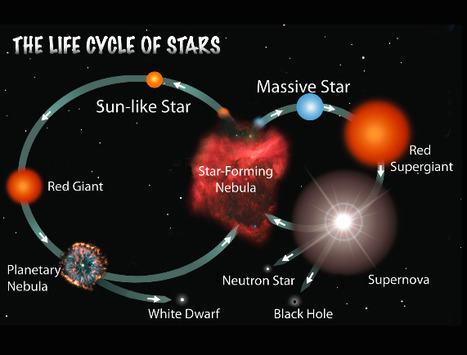
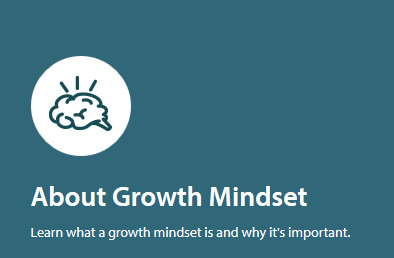
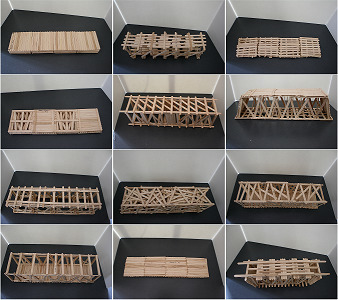
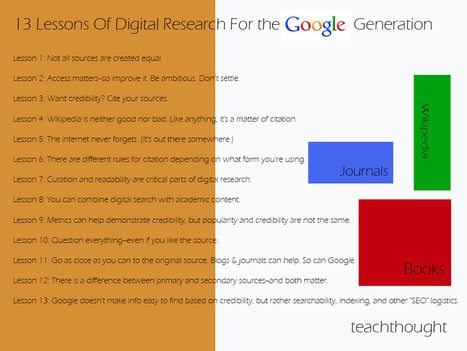

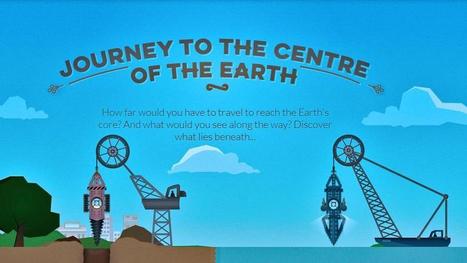

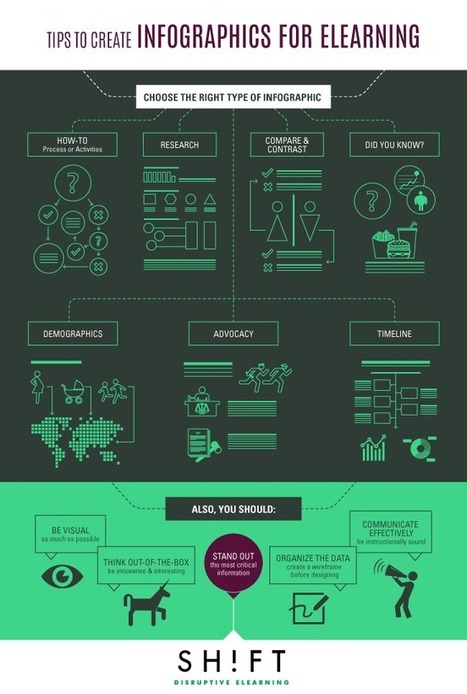
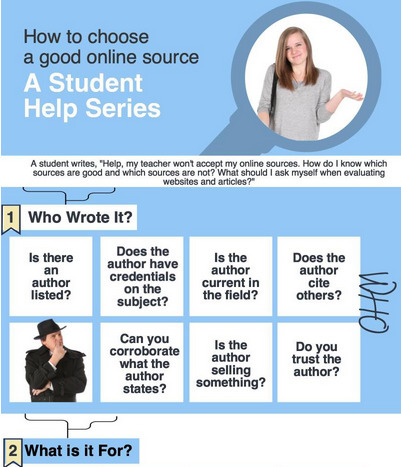
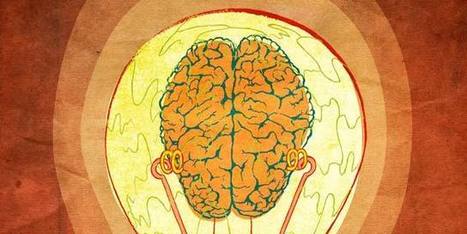








Thx Beth Dichter